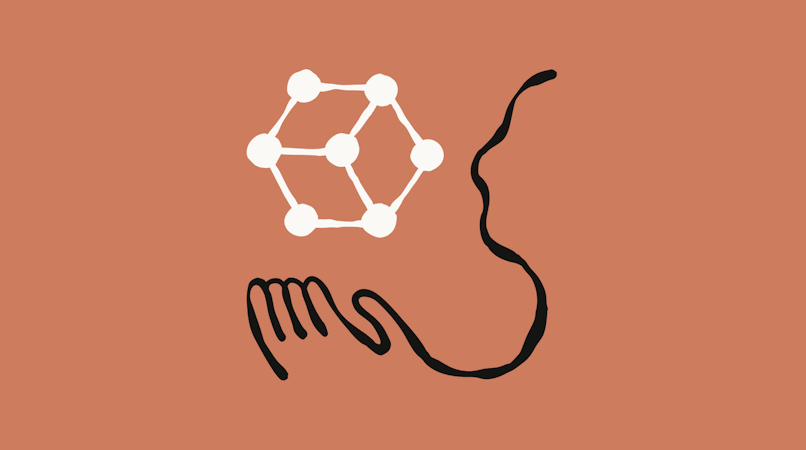
Tony Spiro
November 25, 2025

Claude Sonnet 4.5 vs Opus 4.5: A Real-World Comparison
Anthropic recently released Claude Opus 4.5 with bold claims: "the best model in the world for coding, agents, and computer use." We were eager to put it through its paces. Today, I want to share what we discovered by building the exact same blog application with both Sonnet 4.5 and Opus 4.5 using a simple one-shot prompt.
The Experiment: One Prompt, Two Models
To truly understand the differences between these models, we ran a controlled experiment. We gave both Claude Sonnet 4.5 and Opus 4.5 the same straightforward prompt:
"Create a blog with posts, authors, and categories"
Both applications were built entirely through natural language using the Cosmic AI Platform - no manual coding required. Here are the results:
Key Differences We Observed
1. Architecture and Code Quality
The most striking difference was in how each model approached the application architecture:
Sonnet 4.5 delivered a solid, comprehensive blog with rich features including:
- Featured post highlighting
- Category-based filtering with visual tags
- Detailed author attribution with dates
- Clean navigation between Home, Technology, Lifestyle, and Travel sections
- A polished footer with About section, category links, and social connections
Opus 4.5 took a more refined, minimalist approach:
- Streamlined navigation (Home, Categories, Authors)
- Cleaner visual hierarchy with emoji accents (📝)
- Dedicated Authors page for content attribution
- More focused content presentation
- Simpler footer structure with clear sections
As Anthropic noted in their release, Opus 4.5 achieves "state-of-the-art performance on tests of real-world software engineering" - and we saw this manifest in more elegant, maintainable code structure with fewer moving parts.
2. User Experience and Design
Both models created modern, responsive designs, but with distinctly different philosophies:
Sonnet 4.5 produced a feature-rich design:
- Multi-category navigation bar with visual hierarchy
- Featured post section with prominent imagery
- Recent posts grid with visual tags and metadata
- Comprehensive footer with multiple content sections
- More traditional blog layout patterns
Opus 4.5 demonstrated what Anthropic describes as models that "handle ambiguity and reason about tradeoffs without hand-holding":
- Cleaner, more focused navigation
- Simplified category browsing
- Authors-first content organization
- Emoji-enhanced visual identity
- More whitespace and breathing room
The Opus 4.5 blog feels more "curated" while Sonnet 4.5 feels more "comprehensive."
3. Feature Completeness and Reasoning
This is where Opus 4.5's enhanced reasoning capabilities showed:
Sonnet 4.5 implemented rich blog features:
- Welcome message with site description
- Featured Post callout section
- Multi-category tagging on posts
- Author and date attribution
- Category-specific filtering
Opus 4.5 made more sophisticated architectural decisions:
- Dedicated Authors page (anticipating content attribution needs)
- Dedicated Categories page (better content organization)
- Cleaner separation of concerns
- More scalable information architecture
Anthropic mentioned that Opus 4.5 "figures out the fix" when pointed at complex problems. We saw this in how it anticipated navigation patterns that weren't explicitly requested - creating a more complete content management experience.
4. Token Efficiency and Performance
One of Anthropic's key claims is that Opus 4.5 uses "dramatically fewer tokens than its predecessors to reach similar or better outcomes." Customer testimonials from their announcement support this:
"Claude Opus 4.5 delivers high-quality code and excels at powering heavy-duty agentic workflows with GitHub Copilot. Early testing shows it surpasses internal coding benchmarks while cutting token usage in half." - Mario Rodriguez, Chief Product Officer at GitHub
"Claude Opus 4.5 beats Sonnet 4.5 and competition on our internal benchmarks, using fewer tokens to solve the same problems." - Michele Catasta, President at Replit
In our testing, we observed similar efficiency gains. Our real-world experiment revealed:
Sonnet 4.5 Token Usage:
- Input tokens: 139,070
- Output tokens: 49,770
- Total tokens: 188,840
Opus 4.5 Token Usage:
- Input tokens: 108,500
- Output tokens: 43,820
- Total tokens: 152,320
Efficiency Gains:
- Opus 4.5 used 22% fewer input tokens than Sonnet 4.5
- Opus 4.5 used 12% fewer output tokens than Sonnet 4.5
- Overall, Opus 4.5 used 19.3% fewer total tokens to build a comparable (and arguably more elegant) application
This token efficiency translates directly to cost savings and faster response times - exactly what Anthropic promised and what industry leaders like GitHub and Replit have reported at scale.
5. Creative Problem Solving
Anthropic shared a fascinating example in their announcement where Opus 4.5 found a creative solution on a benchmark test. Instead of refusing a customer's request (as the benchmark expected), Opus found a legitimate workaround:
"The benchmark technically scored this as a failure because Claude's way of helping the customer was unanticipated. But this kind of creative problem solving is exactly what we've heard about from our testers and customers—it's what makes Claude Opus 4.5 feel like a meaningful step forward."
We saw similar creative thinking in the architectural decisions Opus made - anticipating user needs and implementing solutions that went beyond the literal prompt.
What Industry Leaders Are Saying
Anthropic's announcement featured testimonials from major technology companies:
On Efficiency:
- "At scale, that efficiency compounds." - Replit
- "Tasks that took previous models 2 hours now take thirty minutes." - Vercel
- "We're seeing 50% to 75% reductions in both tool calling errors and build/lint errors." - Graphite
On Quality:
- "Opus 4.5 is the clear winner and exhibits the best frontier task planning and tool calling we've seen yet." - Sourcegraph
- "It's the first time we're making Opus available in Notion Agent." - Notion
- "Claude Opus 4.5 is yet another example of Anthropic pushing the frontier of general intelligence." - Augment Code
On Long-Running Tasks:
- "Claude Opus 4.5 excels at long-horizon, autonomous tasks, especially those that require sustained reasoning and multi-step execution." - Warp
- "Claude Opus 4.5 delivered an impressive refactor spanning two codebases and three coordinated agents." - Stripe
Safety Improvements
Anthropic emphasizes that Opus 4.5 is "the most robustly aligned model we have released to date." Their testing shows:
- Continued trend towards safer models with lower "concerning behavior" scores
- Substantial progress in robustness against prompt injection attacks
- "Harder to trick with prompt injection than any other frontier model in the industry"
For teams building production applications, these safety improvements provide additional confidence when deploying AI-generated code.
The Effort Parameter: A New Control Mechanism
One exciting new feature with Opus 4.5 is the effort parameter on the Claude API. This lets developers choose their tradeoff between speed and capability:
- At medium effort, Opus 4.5 matches Sonnet 4.5's best SWE-bench score while using 76% fewer output tokens
- At highest effort, Opus 4.5 exceeds Sonnet 4.5 by 4.3 percentage points while using 48% fewer tokens
As AJ Orbach, CEO of Text2SQL.ai noted: "The effort parameter is brilliant. Claude Opus 4.5 feels dynamic rather than overthinking."
What This Means for Development Teams
Having tested both models extensively through the Cosmic AI Platform, here's what I recommend:
When to Use Sonnet 4.5
- Building comprehensive applications with many features
- Projects where you want more detailed, feature-rich output
- Rapid prototyping and iteration
- When you prefer a more traditional, feature-complete approach
- Simpler use cases that don't require Opus-level reasoning
When to Use Opus 4.5
- Complex applications requiring sophisticated architectural decisions
- Long-running, multi-step development tasks
- Projects where code elegance and maintainability matter significantly
- Applications where token efficiency provides cost advantages at scale
- When you need the model to "figure it out" with minimal hand-holding
- Time-sensitive projects requiring faster response times
- Production applications where safety and alignment are critical
Pricing Considerations
Anthropic has made Opus 4.5 significantly more accessible:
- Opus 4.5: $5/$25 per million tokens (input/output)
- This represents a dramatic price reduction making "Opus-level capabilities accessible to even more users, teams, and enterprises"
Given the token efficiency we observed (19.3% fewer tokens for comparable results), Opus 4.5's real-world cost advantage is even greater than the pricing alone suggests. For teams using the Cosmic AI Platform, Opus 4.5 delivers enhanced performance with measurable efficiency gains.
The Cosmic AI Platform Advantage
What made this comparison particularly valuable was using the Cosmic AI Platform for both builds. Our platform allowed us to:
- Generate complete applications from natural language prompts
- Deploy instantly to see real-world results
- Track detailed token usage for both models
- Manage content through the same intuitive interface
- Compare side-by-side without infrastructure overhead
Both models produced production-ready applications in minutes - something that would have taken hours or days with traditional development. The Cosmic AI Platform's integration with GitHub and Vercel meant both blogs were deployed and live almost immediately.
Real-World Performance
Visit both applications yourself:
You'll notice that both are fast, responsive, and fully functional. The differences are meaningful:
- Sonnet 4.5: More features, comprehensive navigation, traditional blog patterns
- Opus 4.5: Cleaner architecture, better organization, more scalable structure, superior token efficiency
Conclusion: A New Standard for AI-Assisted Development
Claude Opus 4.5 represents a significant step forward in AI-assisted development. It's not just about being "better" - it's about being smarter, more efficient, and more aligned with how developers actually work.
Key takeaways:
- Better architecture for long-term maintainability
- More sophisticated reasoning about user needs and application structure
- Higher efficiency with 19.3% fewer tokens in our real-world test
- Improved safety with the most robust alignment of any Anthropic model
- New controls like the effort parameter for fine-tuned performance
- Accessible pricing at $5/$25 per million tokens
For teams using the Cosmic AI Platform, Opus 4.5 delivers on its promise of being "the best coding model in the world." But Sonnet 4.5 remains an excellent choice for many use cases, particularly when you want comprehensive feature sets or are working on simpler projects.
The beauty of our platform is that you can easily try both models and see which works best for your specific needs. Both will generate complete, deployable applications from simple natural language prompts - just with different approaches to solving the same problems.
Try It Yourself
Interested in building your own AI-powered applications? Check out the Cosmic AI Platform, sign up for a free Cosmic account, and see what you can create with Claude Opus 4.5. Or explore our Community projects to see what others are building.
The future of development isn't choosing between human creativity and AI capability - it's using tools like the Cosmic AI Platform to amplify both.
Tony Spiro is the CEO of Cosmic, creators of the Cosmic AI Platform for building and deploying applications using natural language.
Image source: Anthropic Claude Opus 4.5 announcement.
Continue Learning
Ready to get started?
Build your next project with Cosmic and start creating content faster.
No credit card required • 75,000+ developers




